Cradle scFLOW - Thermo-Fluid Analysis System (Polyhedral Mesh)
Cradle CFD scFLOW adalah alat CFD generasi berikutnya yang menggunakan mesh tidak terstruktur untuk secara akurat mewakili geometri rumit
Perangkat lunak CFD generasi baru dengan kemampuan multifisika dan tujuan umum
scFLOW adalah alat CFD generasi berikutnya yang menggunakan mesh tidak terstruktur untuk secara akurat mewakili geometri rumit. Dengan Preprocessor yang membantu pengguna level mana pun menghasilkan elemen mesh polihedral berkualitas tinggi dan membuat model yang rumit, dan Solver yang menjamin stabilitas dan kecepatan lebih tinggi, scFLOW mampu memecahkan masalah aerodinamika dirgantara dan otomotif, kinerja kipas, pompa, dan peralatan berputar lainnya, masalah desain perangkat elektronik, fenomena multifase, kavitasi baling-baling laut, dan berbagai permasalahan.
Melalui simulasi bersama dan simulasi berantai yang dipadukan dengan Marc, MSC Nastran, Adams, dan Actran, analisis penggandengan dan multidisiplin yang lebih realistis dengan dinamika fluida, struktur, akustik, dan multibenda dapat dicapai.
Fitur
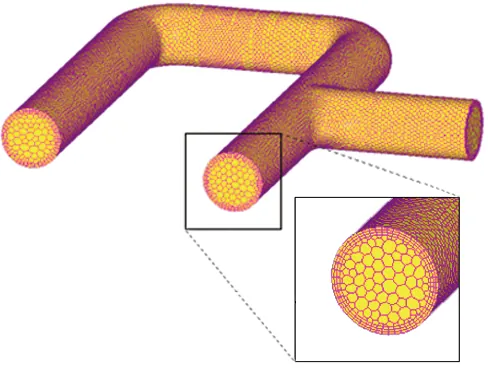
Polyhedral Mesher
The use of polyhedral elements improves the stability and computational accuracy of element-centered solvers. scFLOWpre allows you to create elements according to a target number of elements and automatically refine elements near walls where flow changes are severe. It is also an automatic mesher that can specify mesh size for each part or region.
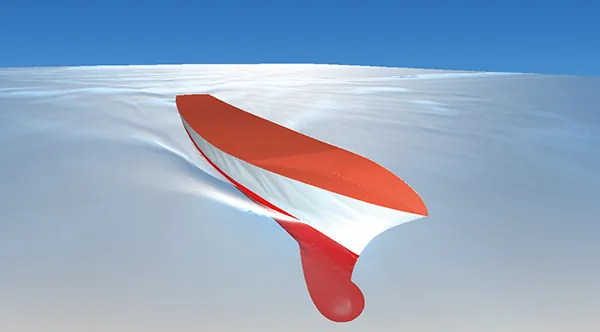
Free surface (steady-state / transient)
The shape of an interface between a gas and a liquid can be simulated. Calculations by VOF method (new method: FIRM) are fast and accurate, and functions including moving boundary, overset mesh, and particle tracking can be used in combination. Because a phenomenon where the phase interface becomes stable can be analyzed in a steady-state calculation, the result can be obtained in a shorter time than before.

Moving Mesh (Discontinuous Mesh / Overset Mesh)
Discontinuous mesh function enables an analysis with consideration on shear heating between rotor and pad in a disk brake. The function also makes it possible to analyze a combination of rotation and translation such as a piston pump. Free movement of regions, that cannot be analyzed using existing functions such as stretching or rotating elements, can be simulated by overset mesh function to overlap mesh elements for stationary and moving regions.

6-Degree-of-Freedom Motion
Passive translation and rotation of a rigid body receiving a fluid force can be analyzed. With the function, the user can analyze a ball valve with consideration of the elasticity of the spring (1D translation), and paper airplane with consideration of 6-degree-of-freedom rigid-body motion (3D translation + 3D rotation). In addition, the function is applied to analyses of check valves, wind power generators, and blades of wave power generators.
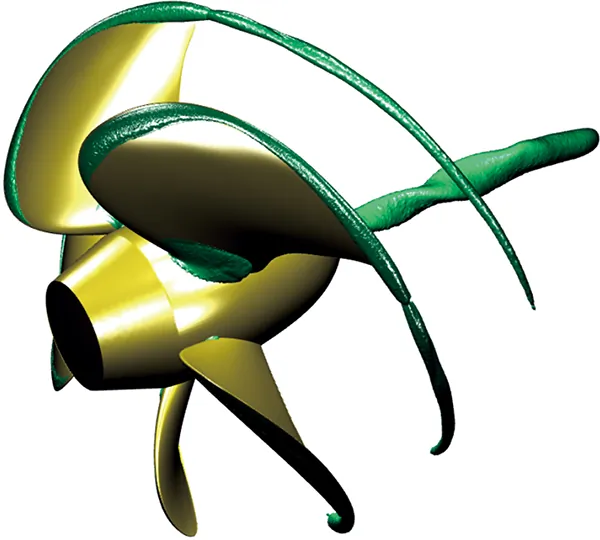
Cavitation
This function enables simulation of a vaporization phenomenon called cavitation, which is caused at an area where pressure of a liquid becomes lower than in the surrounding area, such as with a propeller rotating at a high speed under water. The occurrence of cavitation can be predicted by applying the cavitation model based on the pressure values. The software also supports problems caused by cavitation such as erosion.
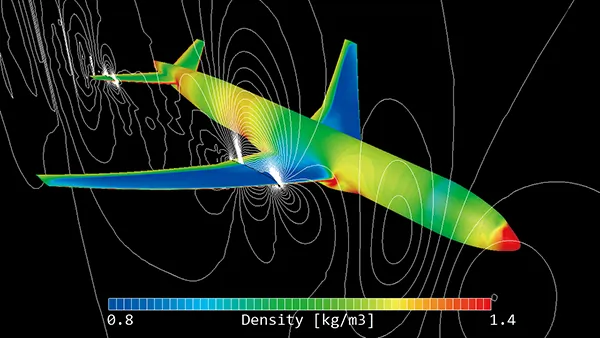
Compressible Flow
The software can analyze phenomena such as supersonic flow and significant expansion/contraction of volume. For a compressible fluid, both the pressure-based and the density-based Solvers can be used. The density-based Solver keeps the calculation stable even with high Mach number. You can select either Solver depending on the analysis target and phenomenon.
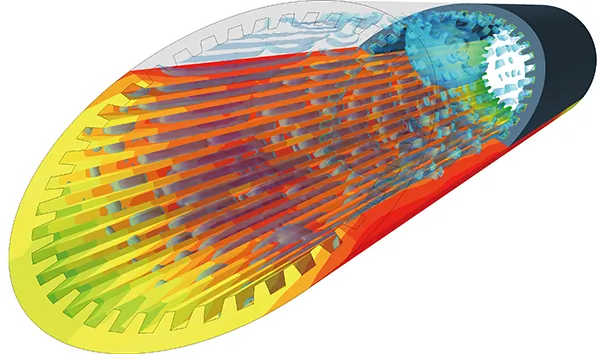
Evaporation/Condensation
Free surface analysis function (VOF method) of this software can simulate phase change between gas and liquid, such as evaporation and condensation. By considering phase change, not only simple heat conduction but also heat transfer from latent heat can be calculated. For example, this method can be applied to internal flow simulations for heat transfer devices such as heat pipes, in which a refrigerant liquid changes to vapor by absorbing heat from an outer region.

Discrete Element Method (DEM)
With the use of particle tracking function with inter-particle forces (DEM), simulation can be performed on phenomena where fluid flows through a particle filling, such as fluidized bed and powder conveying.

Thermoregulation-model (JOS)
Combination use of the thermoregulation-model (JOS) and a fluid analysis enables analyses of the surface temperature of a human body under a certain thermal environment. It can also be used to analyze temperature and humidity changes in the surrounding environment of a human body. The user can consider age, clothes, and physiological phenomena of the human body such as heat transfer by blood flow in addition to the surrounding environment of a human body such as temperature and velocity.
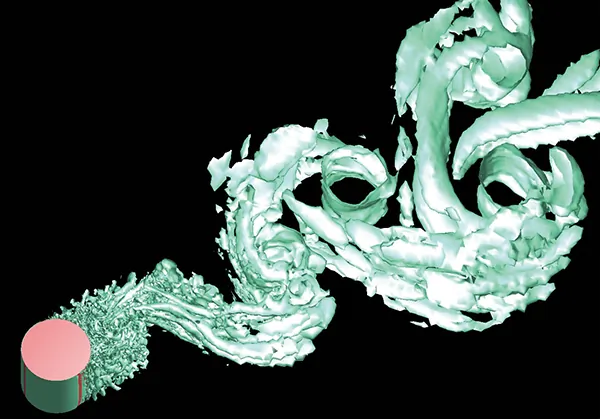
LES
LES is one of the turbulent flow models. It models eddies smaller than the mesh element in size and directly calculates other eddies. Although calculation load is large, LES enables simulations closer to real phenomena. LES is often used in noise analyses, significantly affected by time variation, to simulate the behavior of small eddies. The user can use the hybrid model with RANS, a turbulent model of small calculation load.
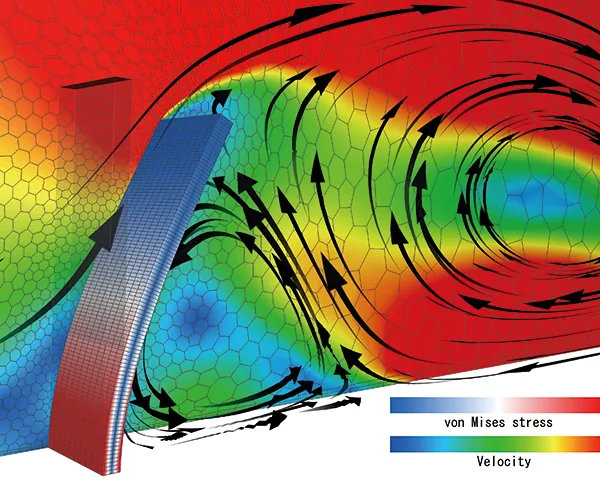
Co-simulation with Hexagon CAE solutions
Through co-simulation and chained simulations coupled with Marc, MSC Nastran, Adams and Actran, more realistic coupling and multidisciplinary analyses with fluid, structure, acoustics, and multibody dynamics can be achieved.
